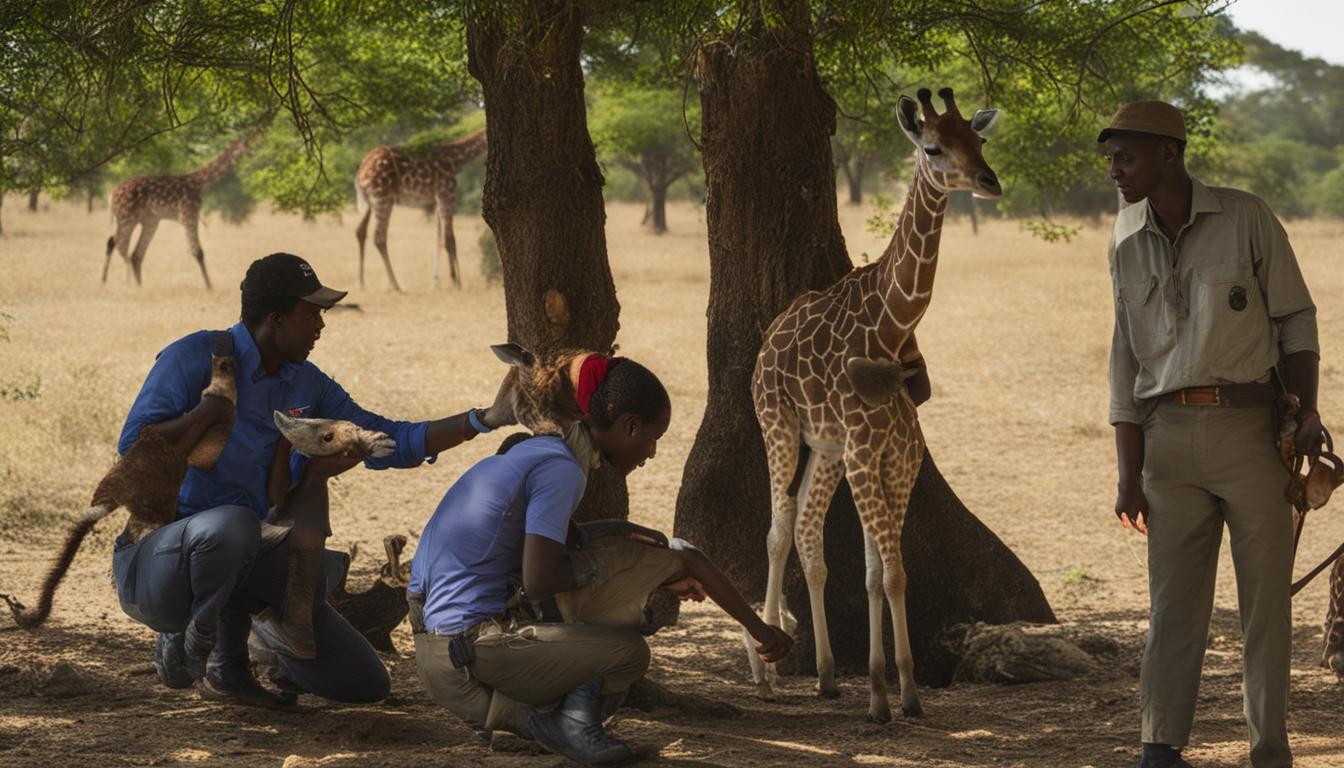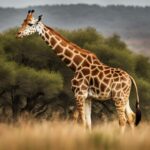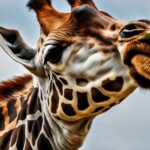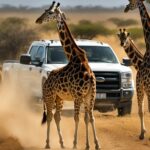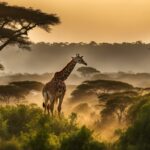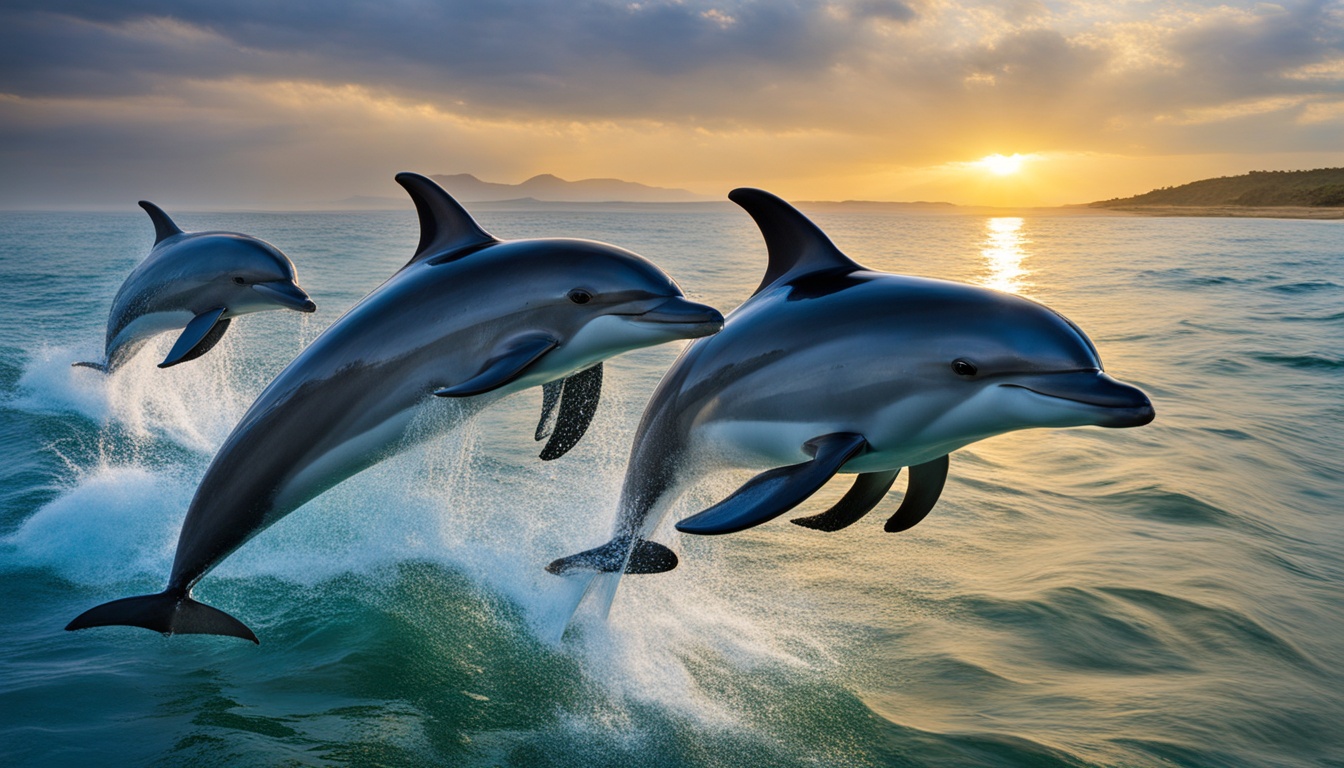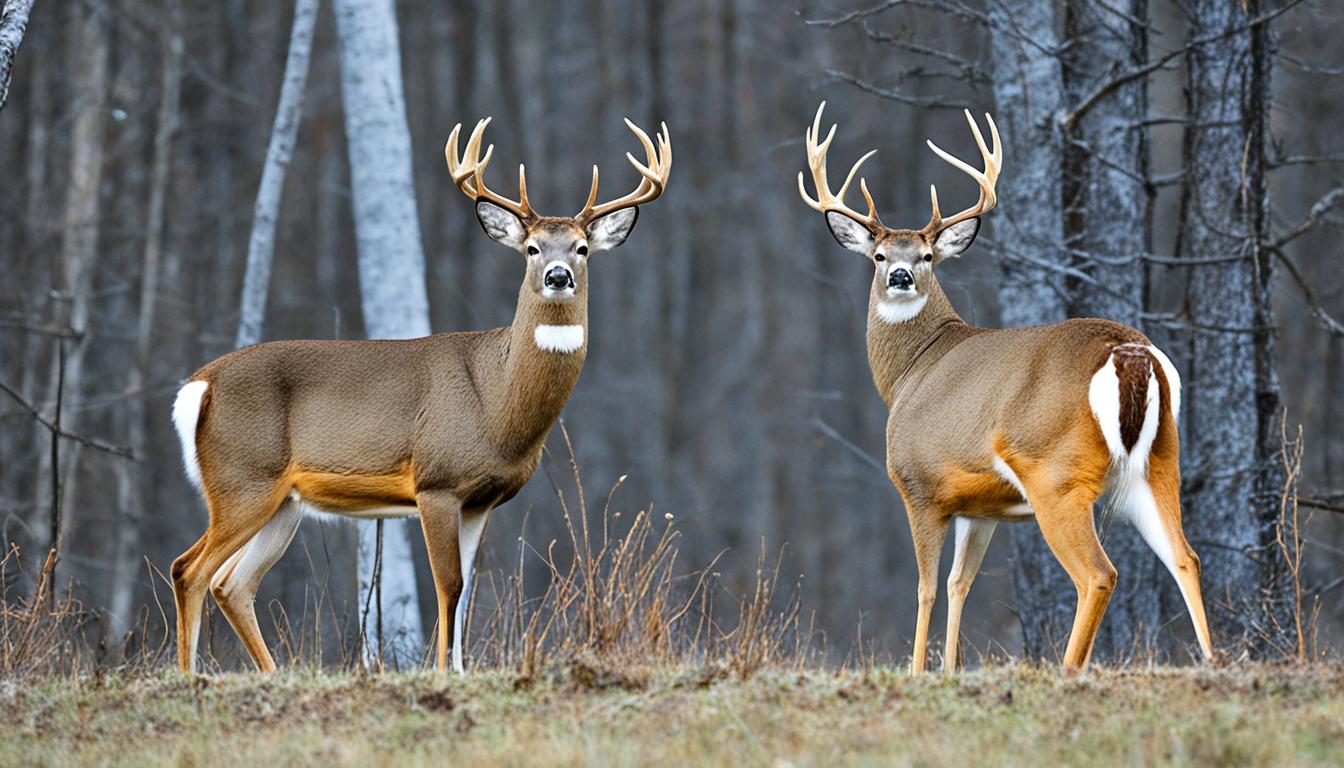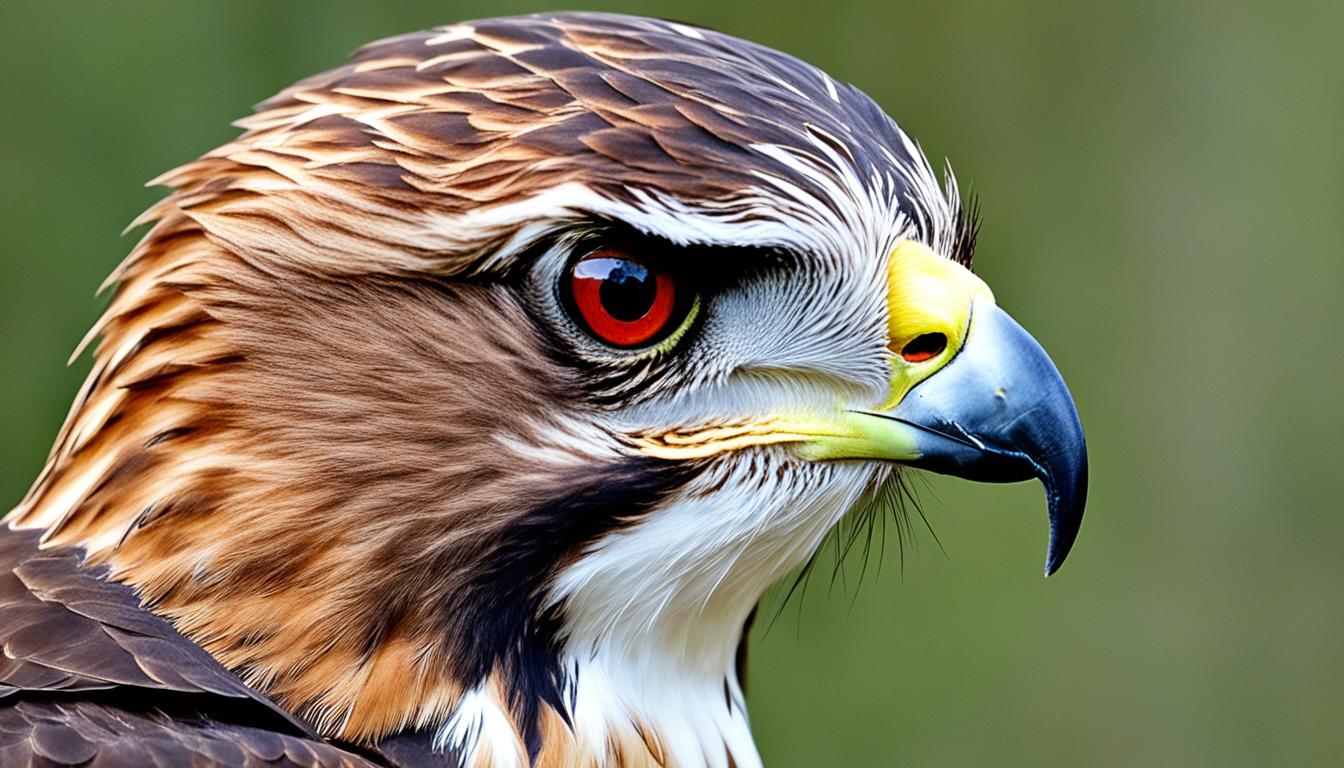When it comes to caring for giraffe orphans, dedicated caretakers play a crucial role in ensuring their well-being and successful rehabilitation. These gentle giants, like Jazz, a young giraffe calf, rely on specialized care and support to thrive.
Jazz’s story began when he was abandoned by his mother and rescued by the Rhino Orphanage. The staff at the orphanage wasted no time in providing him with the necessary medical care, including hydration and IV fluids, to stabilize his condition.
Raising giraffe orphans can be challenging due to their unique needs, but the caretakers at the Rhino Orphanage are committed to giving them the best possible care. They go above and beyond to ensure that Jazz and other giraffe orphans receive the necessary attention, affection, and rehabilitation.
During his rehabilitation, Jazz has found an unexpected companion in Hunter, the orphanage’s anti-poaching dog. Hunter has formed a special bond with Jazz, providing comfort and companionship during his journey towards reintegrating into the wild.
With the help of caring individuals and facilities like the Rhino Orphanage, giraffe orphans like Jazz have a chance at a brighter future. By supporting giraffe rescue and rehabilitation efforts, we can make a difference in the lives of these magnificent creatures and contribute to their conservation.
The Unique Characteristics of Giraffes
Giraffes are fascinating creatures with several unique physical characteristics that distinguish them from other animals. These distinctive features enable them to thrive in their natural habitats and adapt to their surroundings.
Giraffe Neck:
Arguably the most notable characteristic of giraffes is their long necks. A giraffe’s neck can measure up to 6 feet in length and is composed of seven vertebrae, the same number as a human neck. This remarkable neck adaptation allows giraffes to reach leaves high up in trees that other herbivores cannot access, providing them with an abundant food source. The neck also serves as a lookout platform, allowing giraffes to spot potential threats from a distance and stay vigilant.
Giraffe Horns:
Giraffes possess two horn-like structures on their heads called ossicones. Ossicones are not true horns but are made up of ossified cartilage covered in skin and fur. These unique protrusions are present in both males and females and are used for various purposes. Male giraffes often engage in a behavior known as “necking,” where they use their necks and ossicones to engage in combat and establish dominance. It is a remarkable display of strength and serves as a means of competition for mating rights.
Giraffe Spots:
Another striking feature of giraffes is their distinctive coat pattern, consisting of irregular spots covering their bodies. No two giraffes have the same spot pattern, making it an individualized characteristic. These spots serve several essential functions. Firstly, they act as camouflage, helping giraffes blend into their surroundings and avoid predators. Additionally, the spots aid in thermoregulation, as they help dissipate excess heat by increasing airflow over the giraffe’s body. The intricate spot pattern is not only visually appealing but also serves a vital purpose in a giraffe’s survival.
| Unique Characteristics of Giraffes | Description |
|---|---|
| Giraffe Neck | Giraffes have long necks that allow them to reach high leaves and spot potential threats. |
| Giraffe Horns | Both male and female giraffes have horn-like ossicones that are used for combat and dominance. |
| Giraffe Spots | Giraffes have unique spot patterns that serve as camouflage and aid in thermoregulation. |
Giraffes’ long necks, distinctive horns, and intricate spot patterns make them truly remarkable creatures. These unique characteristics are not only visually captivating but also play vital roles in their survival and adaptation in the wild. Understanding and appreciating these features help us gain a deeper appreciation for the wonders of the animal kingdom.
Giraffe Orphanage and Rehabilitation Programs
Giraffe conservation efforts are crucial in ensuring the survival of these majestic creatures. At the Rhino Orphanage, their focus on rehabilitating orphaned rhinos has expanded to include giraffes. Raising baby giraffes comes with its own set of challenges, particularly due to their height and difficulty in bottle feeding. However, the dedicated caretakers at the orphanage are committed to providing specialized care for giraffe orphans and ensuring their successful reintegration into the wild.
The rehabilitation process for giraffes at the orphanage involves not only physical care but also the nurturing of their natural behaviors. Giraffe calves are provided with the necessary medical attention and nourishment, including a diet specifically formulated to meet their nutritional needs. To simulate the social interactions they would experience in the wild, efforts are made to introduce giraffe calves to other orphaned giraffes and encourage socialization.
Additionally, caretakers at the Rhino Orphanage have developed innovative techniques to address the challenges of bottle feeding giraffes. This includes the use of specially designed bottles with elongated nipples to accommodate the giraffes’ unique anatomy. The caretakers work diligently to ensure that the giraffe orphans receive the nutrition they need to grow and thrive.
Giraffe Orphanage Rehabilitation Program: Key Statistics
| Year | Giraffes Rehabilitated | Giraffes Successfully Reintegrated |
|---|---|---|
| 2018 | 7 | 5 |
| 2019 | 10 | 8 |
| 2020 | 12 | 9 |
| 2021 (YTD) | 5 | 3 |
The rehabilitation efforts at the Rhino Orphanage have yielded promising results. Over the past four years, the orphanage has successfully rehabilitated and reintegrated a significant number of giraffes back into their natural habitats. These numbers reflect the dedication and expertise of the caretakers, as well as the effectiveness of the rehabilitation programs implemented at the orphanage.
Specialized care for giraffe orphans plays a vital role in giraffe conservation efforts. The Rhino Orphanage, through its rehabilitation programs, not only saves the lives of these vulnerable animals but also contributes to the overall population sustainability of giraffes. With continued support and awareness, we can help secure a brighter future for giraffes and ensure that generations to come can marvel at their beauty in the wild.
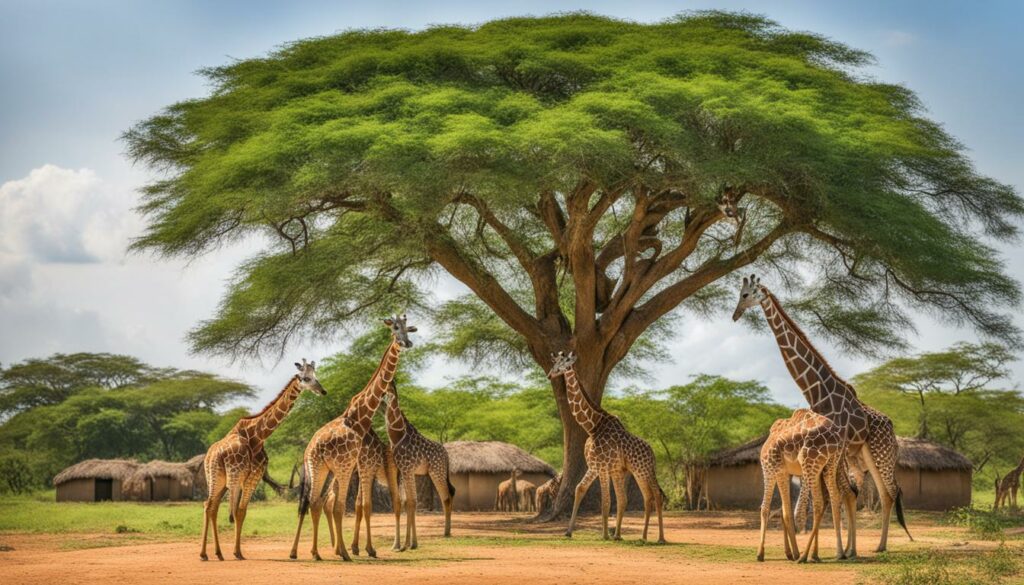
Caring for Orphaned Elephants and Rhinos
At the David Sheldrick Wildlife Trust in Nairobi, elephant and rhino orphans receive specialized care and rehabilitation. These vulnerable animals, often left without their mothers due to poaching or other tragedies, require round-the-clock attention and a nurturing environment to thrive. The dedicated team at the trust works tirelessly to ensure the well-being and successful reintegration of these majestic creatures into the wild.
When orphaned elephants arrive at the trust, they are immediately provided with a specially formulated milk formula that mimics their mother’s milk. This milk is fed to the elephants every three hours, ensuring they receive the necessary nutrients for healthy growth. The trust’s keepers develop strong bonds with each orphan, providing them with emotional support and companionship as they navigate this challenging journey.
Rehabilitating elephant orphans is a gradual process. The orphans remain at the trust until they are old enough and strong enough to be reintroduced to a wild elephant herd. This process can take several years, as the orphans learn essential survival skills and adapt to life in the wild. The trust has successfully reintegrated over 130 elephant orphans, giving them a second chance at life in their natural habitat.
The Rehabilitation of Rhinos
In addition to elephant orphans, the David Sheldrick Wildlife Trust also cares for and rehabilitates baby rhinos. These vulnerable creatures face many threats, including poaching and habitat loss. The trust provides them with a safe haven, where they receive specialized care to ensure their well-being and eventual reintroduction into the wild.
The process of rehabilitating baby rhinos is similar to that of elephants. They are carefully raised and nurtured by a team of dedicated keepers who provide round-the-clock attention. These keepers develop close bonds with the rhinos, ensuring their physical and emotional needs are met. As the rhinos grow, they are gradually introduced to other rhinos in the trust’s care, preparing them for their eventual release into protected areas where they can roam freely.
Through the efforts of organizations like the David Sheldrick Wildlife Trust, orphaned elephants and rhinos are given a second chance at life. These conservation initiatives not only save individual animals but also contribute to the preservation of these magnificent species for future generations.
Giraffe Centre: Conservation and Education
The Africa Fund for Endangered Wildlife (AFEW) Giraffe Centre in Nairobi is dedicated to the conservation and breeding of Rothschild giraffes, an endangered species. This unique center encompasses a breeding program that plays a vital role in the preservation of these magnificent creatures.
At the Giraffe Centre, visitors have the incredible opportunity to learn about giraffes and their conservation efforts firsthand. The center offers interactive experiences and educational programs aimed at raising awareness about giraffe conservation and the importance of protecting their habitats.
Preserving a Species
The Rothschild giraffes at the Giraffe Centre are part of a successful breeding program aimed at increasing their population in the wild. With fewer than 2,500 individuals left in the wild, these efforts are crucial for the long-term survival of the species.
The center has successfully reared and released over 50 giraffes into the wild, contributing to the overall conservation efforts. By visiting the Giraffe Centre and supporting its initiatives, you are actively contributing to the preservation of these majestic creatures and their natural habitats.
| Giraffe Centre Conservation and Education | |
|---|---|
| Species | Rothschild Giraffes |
| Location | Nairobi, Kenya |
| Programs | – Breeding and rearing of giraffes – Educational activities and outreach – Habitat conservation |
| Achievements | – Releasing over 50 giraffes into the wild – Increasing awareness and understanding of giraffe conservation |
With the dedication of organizations like the Giraffe Centre, we can work together to ensure a future where giraffes roam freely in their natural habitats. By supporting giraffe conservation programs and spreading awareness, we can make a significant impact on the preservation of these iconic animals.
Wildlife Rehabilitation in Kenya
In Kenya, the Kenya Wildlife Service (KWS) operates an animal orphanage within Nairobi National Park, providing critical care for orphaned and injured wild animals. This facility plays a crucial role in wildlife conservation by rescuing and rehabilitating animals that are in distress. The dedicated caretakers at the animal orphanage work tirelessly to ensure the well-being of these animals and their eventual release back into the wild.
The Kenya Wildlife Service’s animal orphanage is a vital part of their wildlife conservation efforts, as it allows them to provide specialized care for countless orphaned animals. From elephants to rhinos, the orphanage takes in a variety of species, each with their own unique needs.
By providing a safe and nurturing environment, the animal orphanage gives these animals a second chance at life. They receive medical treatment, proper nutrition, and behavioral rehabilitation to prepare them for their eventual return to their natural habitats. The staff works closely with veterinary professionals and wildlife experts to ensure the best possible care for each animal.
Wildlife conservation is of utmost importance in Kenya, and the Kenya Wildlife Service’s animal orphanage is at the forefront of these efforts. Through their dedication and compassion, they are making a significant impact on the preservation of Kenya’s diverse wildlife species.
Table: Animal Rescued and Rehabilitated by the Kenya Wildlife Service
| Animal | Number Rescued | Number Rehabilitated | Number Released |
|---|---|---|---|
| Elephants | 50+ | 50+ | 40+ |
| Rhinos | 20+ | 20+ | 15+ |
| Lions | 10+ | 10+ | 9+ |
| Giraffes | 30+ | 30+ | 25+ |
Conclusion
Orphaned giraffe calves receive specialized care and rehabilitation at facilities such as the Rhino Orphanage and the David Sheldrick Wildlife Trust in Kenya. These dedicated caretakers work tirelessly to ensure the well-being and successful reintegration of these gentle giants into the wild.
Conservation efforts, education, and public support are crucial in protecting and preserving giraffes and other wildlife species. By working together, we can make a difference in the lives of these orphaned animals and contribute to the conservation of our planet’s biodiversity.
Supporting organizations like the Rhino Orphanage, the David Sheldrick Wildlife Trust, and the Africa Fund for Endangered Wildlife (AFEW) Giraffe Centre is vital to their continued success. Whether through donations, volunteer work, or spreading awareness, each individual can play a part in safeguarding these magnificent creatures.
Is the Care and Rehabilitation Process for Orphaned Giraffe Calves Similar to Flying Squirrel Anatomy?
Orphaned giraffe calves require specialized care, quite distinct from the observations one might make studying the flying squirrel anatomy wonders. Rehabilitation involves a tailored diet and human caretakers mimicking giraffe behaviors, which bears no resemblance to the intricate adaptations seen in flying squirrel locomotion or body structure.
FAQ
How are orphaned giraffe calves cared for and rehabilitated?
Orphaned giraffe calves are cared for and rehabilitated at specialized facilities such as the Rhino Orphanage. The dedicated staff provide medical care, including hydration and IV fluids, to stabilize the calves. They also face the challenge of bottle feeding due to the giraffes’ height. The caretakers are committed to rehabilitating the giraffes and ensuring their successful reintegration into the wild.
What are the unique characteristics of giraffes?
Giraffes have several unique characteristics. Their long necks allow them to reach high leaves and keep an eye out for predators. Male giraffes engage in ritualized fights called “necking” to establish dominance. Giraffes also have distinct spots that are unique to each individual, which serve multiple purposes including camouflage and thermoregulation.
What programs focus on giraffe orphanage and rehabilitation?
Facilities such as the Rhino Orphanage have expanded their efforts to include giraffe orphans. Caring for these orphans can be labor-intensive due to their height and difficulty in bottle feeding. However, these programs are committed to rehabilitating giraffes and ensuring their successful reintegration into the wild. Donations and support are crucial for their conservation efforts.
What happens to orphaned elephants and rhinos?
Orphaned elephants and rhinos are rescued and rehabilitated at organizations such as the David Sheldrick Wildlife Trust. They are fed a specially formulated milk formula every three hours. These organizations have successfully reintegrated over 130 elephant orphans and a dozen black rhino orphans back into the wild through a gradual introduction to wild herds.
What is the Giraffe Centre focused on?
The Africa Fund for Endangered Wildlife (AFEW) Giraffe Centre focuses on the conservation and breeding of Rothschild giraffes, an endangered species. They have successfully reared and released over 50 giraffes into the wild. Visitors to the centre can feed the giraffes and learn more about their conservation efforts.
What is the role of the Kenya Wildlife Service?
The Kenya Wildlife Service operates an animal orphanage in Nairobi National Park, where orphaned and injured wild animals are cared for. The park plays a crucial role in wildlife conservation in Kenya, although conflicts between humans and animals have occurred due to the park’s fencing. Efforts are being made to mitigate these conflicts and protect the diverse wildlife of Kenya.

